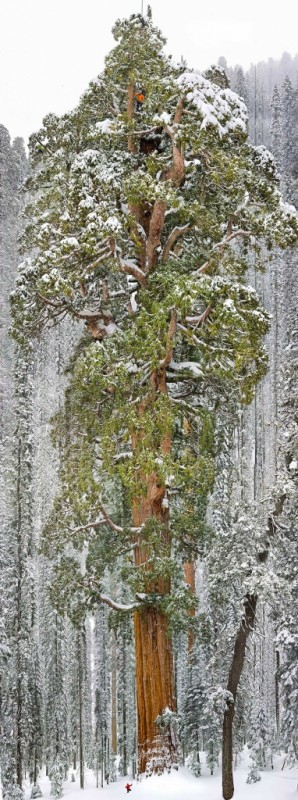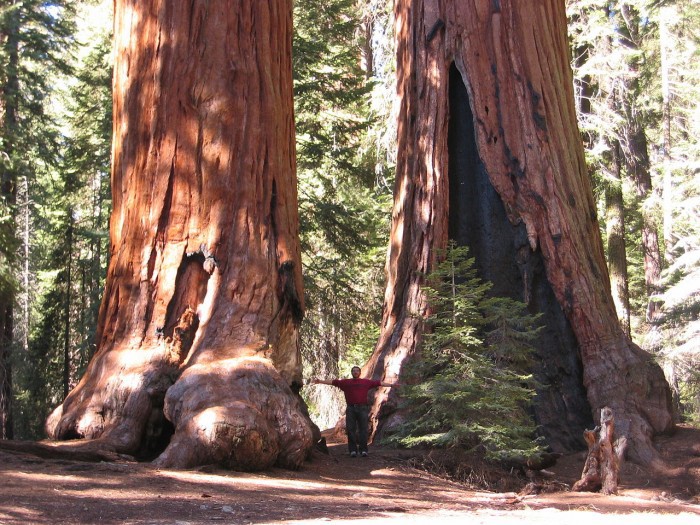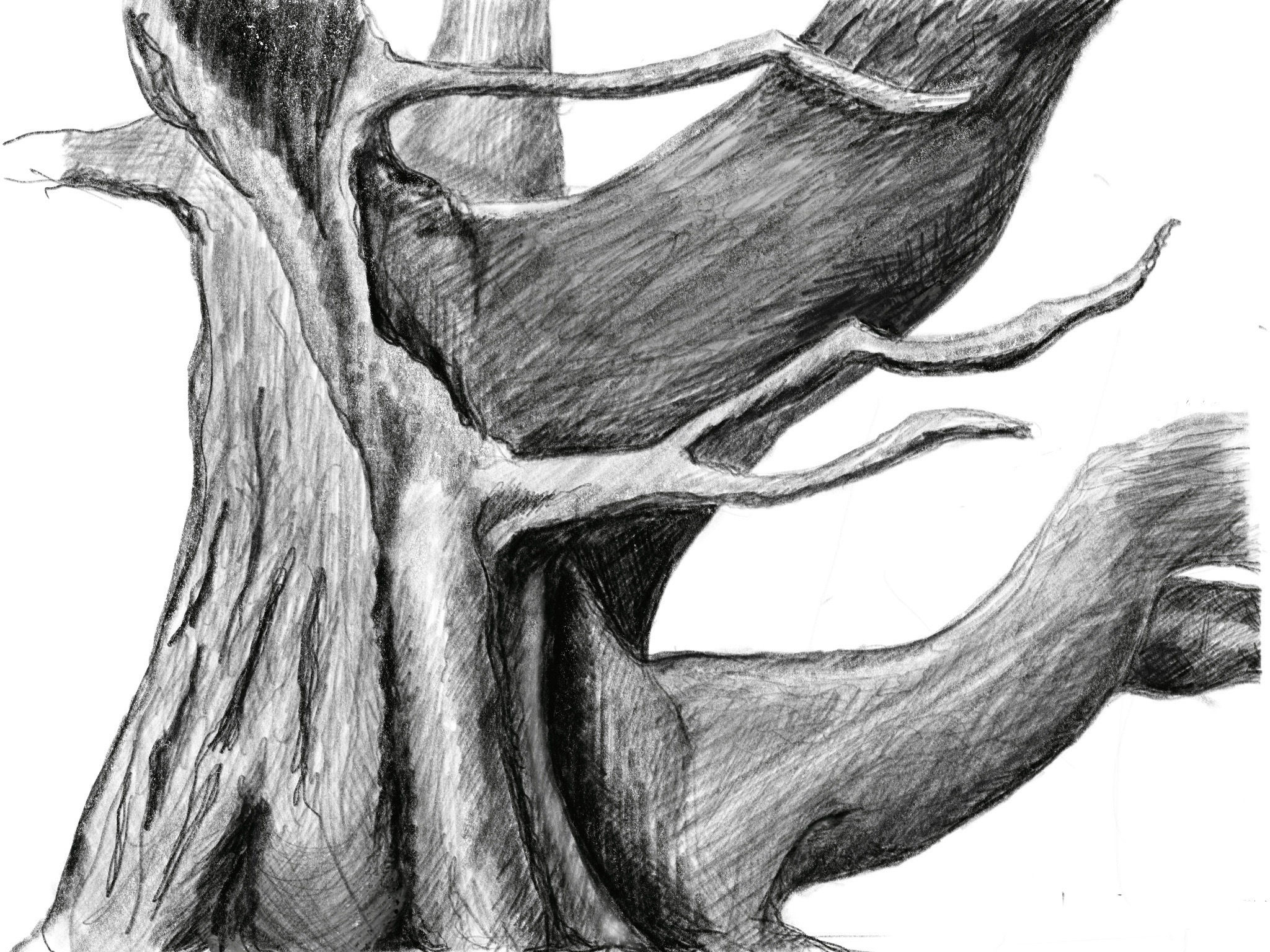Sequoiadendron, as described in 1939 by (Lindley) J.Buchholz, is a genus of evergreen coniferous trees, with two species: Sequoiadendron giganteum, extant, commonly known as the "giant sequoia", grows naturally in the Sierra Nevada Mountains of California. Sequoiadendron chaneyi, extinct, the predecessor of Sequoiadendron giganteum, grew in the Great Basin during the Miocene epoch.
Sequoiadendron giganteum, commonly known as giant sequoia, giant redwood, Sierra redwood, or Wellingtonia is the sole living species in the genus Sequoiadendron, and one of three species of coniferous trees known as redwoods, classified in the family Cupressaceae in the subfamily Sequoioideae, together with Sequoia sempervirens (coast redwood) and Metasequoia glyptostroboides (dawn redwood). The common use of the name "sequoia" generally refers to Sequoiadendron giganteum which occurs naturally only in groves on the western slopes of the Sierra Nevada Mountains of California. It is named after Sequoyah (1767-1843), the inventor of the Cherokee syllabary.
Description. Giant sequoias grow to an average mature height of 160 to 280 feet (50 - 85 m) tall and 20 to 25 feet (6 - 8 m) in diameter. Record trees have been measured to be 311 feet (94.8 m) tall and over 56 ft (17 m) in diameter. The oldest-known giant sequoia based on ring count is 3,500 years old.
The giant sequoia regenerates by seed. Young trees start to bear cones at the age of 12 years. Trees up to about 20 years old may produce stump sprouts subsequent to injury, but unlike coast redwood, shoots do not form on the stumps of mature trees. Giant sequoias of all ages may sprout from their boles when branches are lost to fire or breakage.
At any given time, a large tree may be expected to have about 11,000 cones. Cone production is greatest in the upper portion of the canopy. A mature giant sequoia has been estimated to disperse from 300,000 to 400,000 seeds per year. The winged seeds may be carried up to 600 feet (180 m) from the parent tree.
Lower branches die fairly readily from shading, but trees less than 100 years old retain most of their dead branches. Trunks of mature trees in groves are generally free of branches to a height of 60 to 150 feet (20 - 50 m), but solitary trees will retain low branches.
Because of its size the tree has been studied for its water pull. Water from the roots can be pushed up only a few meters by osmotic pressure but can reach extreme heights by using a system of branching capillarity (capillary action) in the tree's xylem (the water tubules) and sub-pressure from evaporating water at the leaves. A recent study found that Sequoia trees supplement the water by catching the fog, in air roots, at heights where the root water cannot be pulled to.
Distribution. This species is restricted to a limited area of the western Sierra Nevada, California. They occur in scattered groves, with a total of 68 groves, comprising a total area of only 35,620 acres (144.16 square km). Nowhere does it grow in pure stands, although in a few small areas, stands do approach a pure condition. The northern two-thirds of its range, from the American River in Placer County southward to the Kings River, has only eight disjunct groves. The remaining southern groves are concentrated between the Kings River and the Deer Creek Grove in southern Tulare County. Groves range in size from 3,100 acres (12.4 square km) with 20,000 mature trees, to small groves with only six living trees. Many are protected in Sequoia and Kings Canyon National Parks and Giant Sequoia National Monument.


The giant sequoia is usually found in a humid climate characterized by dry summers and snowy winters. Most giant sequoia groves are on granitic-based residual and alluvial soils. The elevation of the giant sequoia groves generally ranges from 4,600 to 6,600 feet (1,400 - 2,000 m) in the north, up to 5,600 to 7,050 feet (1,700 - 2,150 m) to the south. Giant sequoias generally occur on the south-facing sides of northern mountains, and on the northern faces of more southerly slopes.
High levels of reproduction are not necessary to maintain the present population levels. Few groves, however, have sufficient young trees to maintain the present density of mature giant sequoias for the future. The majority of giant sequoias are currently undergoing a gradual decline in density since European settlement.
The giant sequoias are having difficulty reproducing in their original habitat (and very rarely reproduce in cultivation) due to the seeds only being able to grow successfully in full sun and in mineral rich soils, free from competing vegetation. Although the seeds can germinate in moist needle humus in the spring, these seedlings will die as the duff dries in the summer. They therefore require periodic wildfire to clear competing vegetation and soil humus before successful regeneration can occur. Without fire, shade-loving species will crowd out young sequoia seedlings, and sequoia seeds will not germinate. When fully grown, these trees typically require large amounts of water and are therefore often concentrated near streams.
Fires also bring hot air high into the canopy via convection, which in turn dries and opens the cones. The subsequent release of large quantities of seeds coincides with the optimal postfire seedbed conditions. Loose ground ash may also act as a cover to protect the fallen seeds from ultraviolet radiation damage.
Due to fire suppression efforts and livestock grazing during the early and mid 20th century, low-intensity fires no longer occurred naturally in many groves, and still do not occur in some groves today. The suppression of fires also led to ground fuel build-up and the dense growth of fire-sensitive white fir. This increased the risk of more intense fires that can use the firs as ladders to threaten mature giant sequoia crowns. Natural fires may also be important in keeping carpenter ants in check.
In 1970, the National Park Service began controlled burns of its groves to correct these problems. Current policies also allow natural fires to burn. One of these untamed burns severely damaged the second-largest tree in the world, the Washington tree, in September 2003, 45 days after the fire started. This damage made it unable to withstand the snowstorm of January 2005, leading to the collapse of over half the trunk.
Giant sequoia is a very popular ornamental tree in many areas. It is successfully grown in most of western and southern Europe, the Pacific Northwest of North America north to southwest British Columbia, the southern United States, southeast Australia, New Zealand and central-southern Chile. It is also grown, though less successfully, in parts of eastern North America.
Trees can withstand temperatures of ˆ’25°F (ˆ’31°C) or colder for short periods of time, provided the ground around the roots is insulated with either heavy snow or mulch. Outside its natural range, the foliage can suffer from damaging windburn.
Since its discovery, a wide range of horticultural varieties have been selected, especially in Europe. There are, among others, weeping, variegated, pygmy, blue, grass green, and compact forms.
